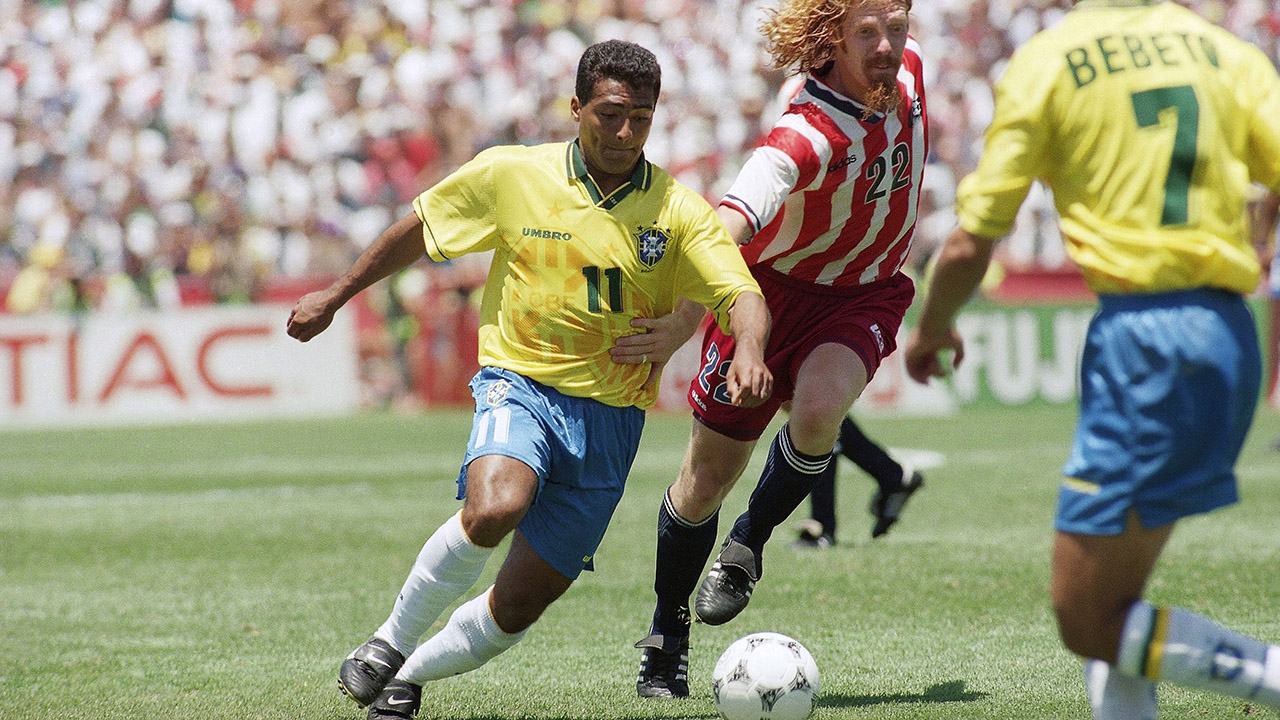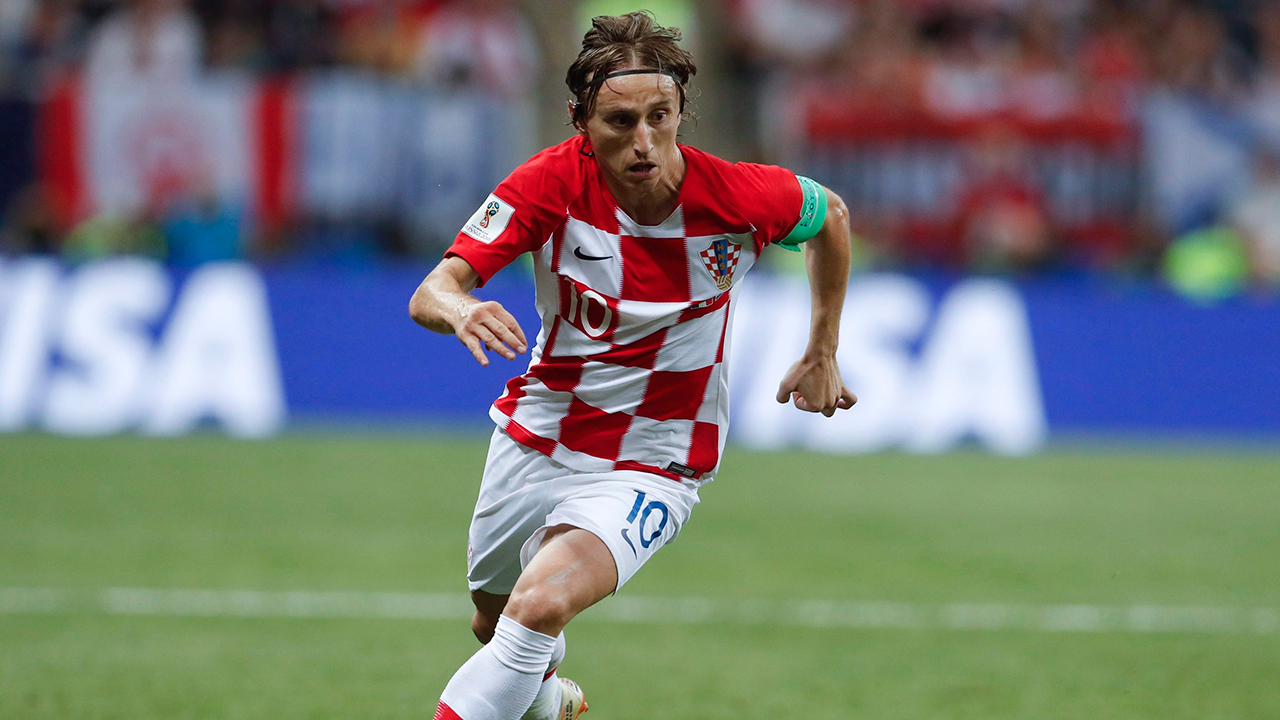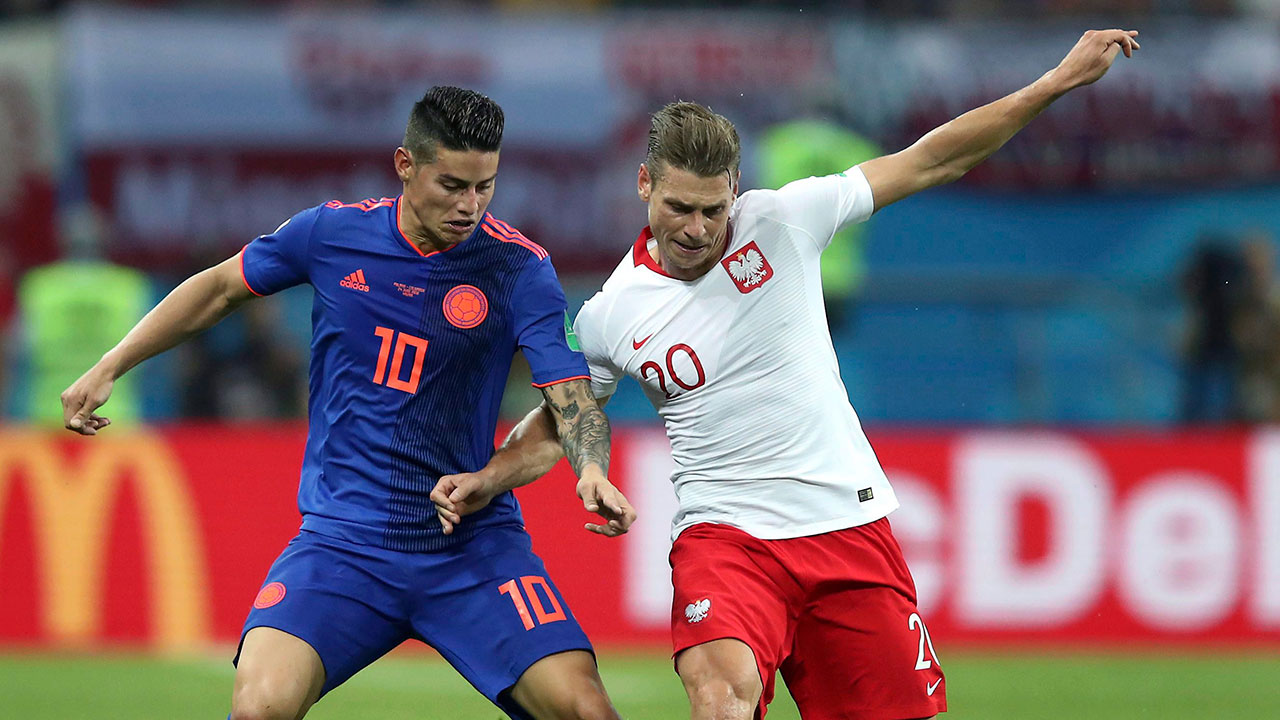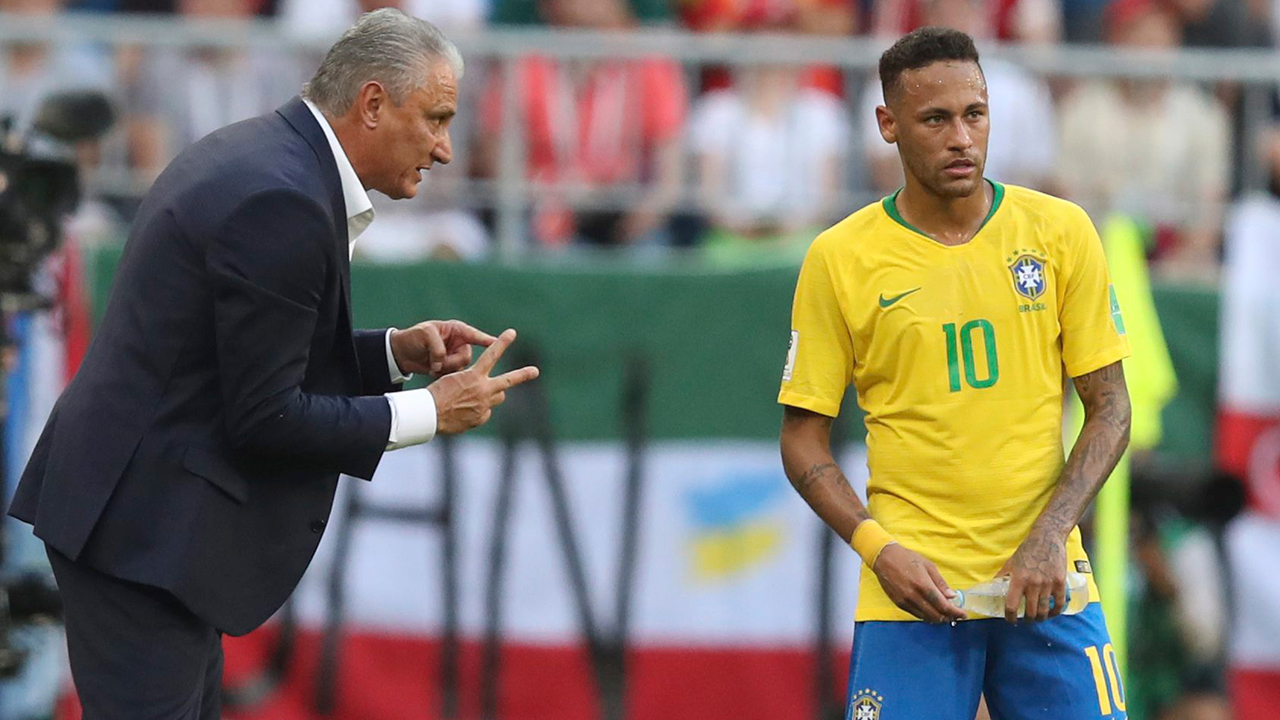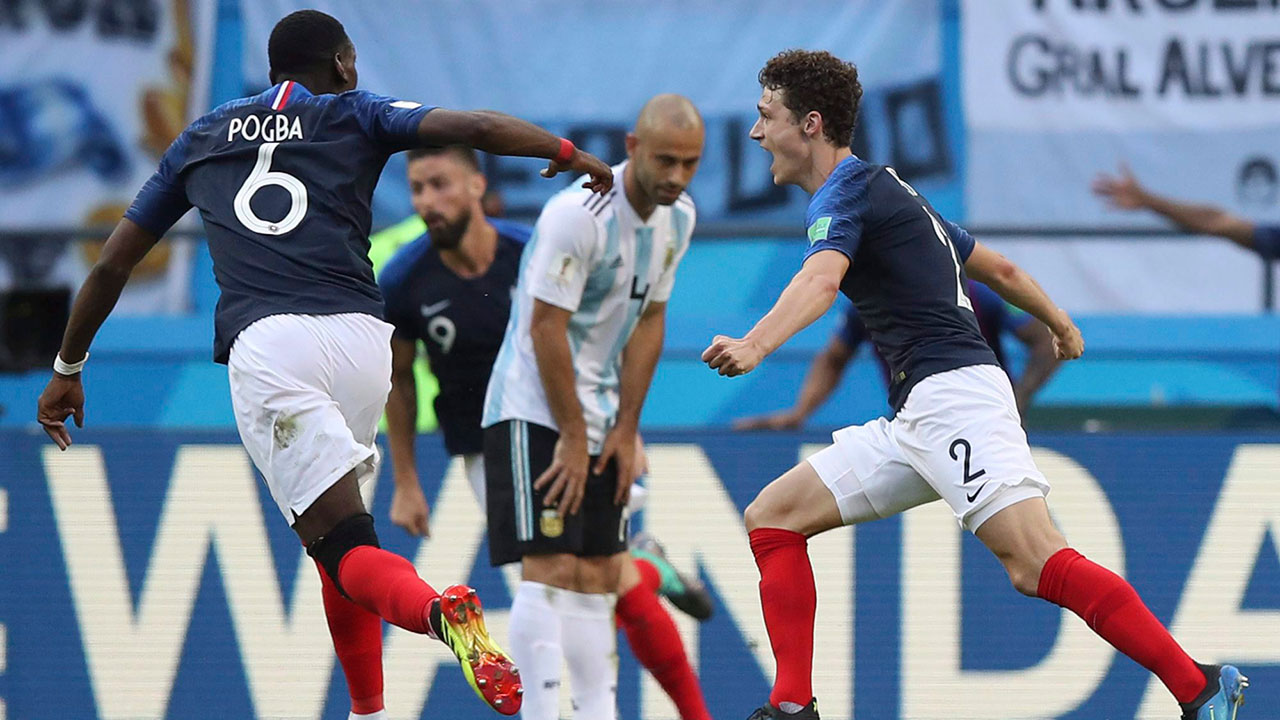The World Cup came to America in 1994 as record crowds watched the tournament unfold, including Brazil’s penalty shootout win over Italy in the final to become the first four-time winner.
THE MAIN STORY
Would the World Cup, the biggest sporting event on the planet, be a success in the United States? Many had their doubts. The North American Soccer League went under in 1984 and with no major domestic league to replace it, soccer was relegated to the periphery of the American sporting conscience, unable to compete with the big-five (football, baseball, basketball, hockey, college sports).
A World Cup on American soil, the soccer-hating critics said, would be a dismal failure with the roster of international stars, virtually unknown to the U.S. audience, destined to play before half-empty stadiums. How wrong they were. The 1994 tournament shattered World Cup records for total attendance (3,587,538 spectators) and average attendance per game (68,991).
More important, fans in the U.S. witnessed the rebirth of attacking soccer at the World Cup. Thanks to the outlaw of the back pass and the introduction of three points for a victory, the defensive postures and the “afraid of losing” mentality that prevailed at the 1990 World Cup was nowhere to be found in the U.S. as teams were committed to attacking soccer and entertaining the American spectators.
[snippet id=3758859]
TOURNAMENT FORMAT
Same as 1990, with the top two nations in each of the six groups, plus the top four third-place teams overall advancing to the knockout round.
THE FINAL
Over 94,000 fans jammed into the Rose Bowl to see two of soccer’s biggest superpowers, Italy and Brazil, collide in a final where the winner would claim the ultimate bragging rights as the first nation to win four World Cup titles. It should have been a classic encounter, one that brilliantly capped off what had been, up until that point, an entertaining and thrilling competition. Instead, it conjured up the dour memories of the 1990 final between West Germany and Argentina, as FIFA’s worst nightmare was realized: a goalless World Cup final decided by penalties.
It didn’t help matters that Roberto Baggio and Romario, who both squandered scoring chances, were carrying nagging injuries, robbing them of their ability to influence the game with their visionary play.
While the Brazilians poured forward in numbers, the Italians (using four defenders and a defensive stopper in front of them) relied on the counterattack. The veteran Franco Baresi, having recovered from recent knee surgery, and the incomparable Paolo Maldini, Baresi’s second lieutenant, did a masterful job of containing Brazil. Both goalkeepers, Italy’s Gianluca Pagliuca and Claudio Taffarel of Brazil, were called upon to make some big saves, none more important than Taffarel’s stop on Baggio in extra time when he tipped a 25-yard shot just over the crossbar.
In the shootout, Baresi and Brazil’s Marcio Santos both missed and, after the teams exchanged two successful kicks, Daniele Massaro’s lethargic effort was saved by Taffarel. Dunga’s goal gave Brazil a 3-2 advantage, meaning Baggio had to score to keep Italy’s hopes alive. The divine striker, who had exhibited such deadly precision throughout the tournament, calmly strode forward to the penalty spot and with the weight of an entire nation’s hopes resting on his broad shoulders, ran up and took his shot. But unlike previous occasions, he chose power over precision. It proved a costly decision – Baggio’s blast sailed over the crossbar into the blue California sky.
Twenty-four years after winning its last World Cup, also against the Italians, Brazil was crowned world champion for a record fourth time.
QUICK FACTS
Number of participating teams: 24
Top scorer: Bulgaria’s Hristo Stoitchkov and Russia’s Oleg Salenko (6 goals)
Number of games: 52
Total goals scored: 141
Average goals per game: 2.71
Highest scoring game: Russia’s 6-1 win over Cameroon on June 28
Total attendance: 3,587,538
Average attendance: 68,991
MAN OF THE TOURNAMENT
Romario. The Brazilian dynamo scored five goals in the tournament, but more important, he was at the heart of Brazil’s potent attack with his pace, creativity and vision. Everything he touched turned to gold as he led Brazil to its fourth World Cup title and claimed the MVP award. Honourable mention to Italy’s Roberto Baggio and Bulgaria’s Hristo Stoitchkov.
MATCH OF THE TOURNAMENT
Brazil’s 3-2 victory over the Netherlands in the quarterfinals. Romario and Bebeto were at their lethal best in Dallas, brilliantly linking up to give Brazil a 2-0 lead early in the second half, only for the Dutch to level the score shortly after. Branco’s powerful strike from 30 yards out with nine minutes left sealed a sensational victory for Brazil. Honourable mention to Romania’s 3-2 win over Argentina in the second round.
THE BIRTH OF MLS
Major League Soccer (MLS) is the top professional soccer league in the United States. It was formed in 1993 in fulfillment of the promise made by U.S. soccer officials to FIFA to establish a pro league in exchange for staging the 1994 World Cup on American soil. The league kicked off in 1996 with 10 teams and boasted surprisingly strong attendance the first season. Numbers declined slightly after the first season, but stabilized in subsequent years thanks to the league’s TV deal with ABC and ESPN. Now, MLS boasts 23 teams, including Toronto FC, Montreal Impact, and Vancouver Whitecaps.
ATTENDANCE RECORDS SHATTERED
The 1994 tournament shattered the World Cup marks for total attendance (3,587,538) and average attendance per game (68,991). Both records still stand. The overall attendance mark is even more impressive when you consider that the 1994 tournament was made up of 24 teams. The 1998 World Cup was the first to feature 32 teams and had 64 total games, 12 more than the 1994 competition.
BAGGIO, ITALY COME ALIVE
After squeaking through the group stage as a third-place qualifier on the basis of goal difference, Italy started to come good in the knockout round when Roberto Baggio — the reigning European and world player of the year — came alive for the first time in the tournament. Baggio bagged a brace against Nigeria in the second round, the late winner against Spain in the quarterfinals and both goals in a 2-1 win over Bulgaria in the semifinals.
ESCOBAR SHOT DEAD
Colombia’s Andras Escobar paid the ultimate price for his own-goal against the U.S. when he and his teammates returned home in disgrace after being knocked out in the first round. On July 2, less than two weeks after losing to the U.S., the Colombian defender was assassinated in brutal fashion for his mistake, gunned down outside a restaurant in a suburb of Medellin. According to his girlfriend, the killer callously shouted “goal” for each of the 12 bullets he fired into Escobar.
Humberto Munoz Castro was found guilty of Escobar’s murder in June 1995 and sentenced to 43 years in prison. The sentence was later reduced to 26 years due to his submitting to the ruling penal code, but Munoz was controversially released from prison in 2005 after serving approximately 11 years of his sentence.
U.S. HOLDS ITS OWN VS. BRAZIL
After advancing from a difficult opening group, the United States faced Brazil in the round of 16. Brazil went a man down when Leonardo was shown a red card just before halftime, but there was to be no duplication of the U.S. Olympic hockey team’s victory over the Soviets in 1980, no “Miracle on Grass.” Bebeto’s goal in the 73rd minute, set up by an exquisite pass from Romario, killed off a valiant American team that could hold its head high after a splendid effort.
DIANNA ROSS’ MIS-KICK
American music icon Diana Ross provided a moment of unintentional comedy for television viewers around the world when she somehow missed scoring into an empty net from a few yards out on a penalty shot during the opening ceremony of the tournament.
MILLA SETS RECORD
Cameroon’s Roger Milla was 42 years and 39 days old when he scored against Russia in the opening round, making him the oldest player to score and play in a World Cup game.
MARADONA FAILS DRUG TEST
Argentina won its first two games and with a revitalized 34-year-old Maradona playing his best soccer in years, the South American powerhouse looked like the favourite to win the tournament. But, just as quickly as they skyrocketed to the top of the World Cup heap, they came crashing down after Maradona failed a drug test (he tested positive for the stimulant ephedrine) and was expelled from the tournament.
SALENKO SCORES 5 IN ONE GAME
The most exciting game in the group stage was the Russia-Cameroon affair. Roger Milla tallied for Cameroon, but Oleg Salenko scored a World Cup-record five goals to lead the Russians to a 6-1 victory.
QUIRKY FACTS
• The United States-Switzerland contest in the opening round at the Pontiac Silverdome in Detroit was the first World Cup match to be played indoors. Natural grass was shipped from California and installed over the existing artificial turf.
• Claudio Caniggia scored the 1,500th goal in World Cup history in Argentina’s 2-1 victory over Nigeria in the first round.
• FIFA awarded the inaugural Yashin Award for the best goalkeeper of the tournament to Belgium’s Michel Preud’homme. The award is named after the Soviet Union’s Lev Yashin, considered by most critics as soccer’s greatest goalkeeper of all time.
• Brazil was held to a shocking 1-1 draw by Canada in an exhibition game in Edmonton weeks before the start of the tournament.
• The 1994 tournament marked the first time Russia competed in a World Cup since the breakup of the Soviet Union.
